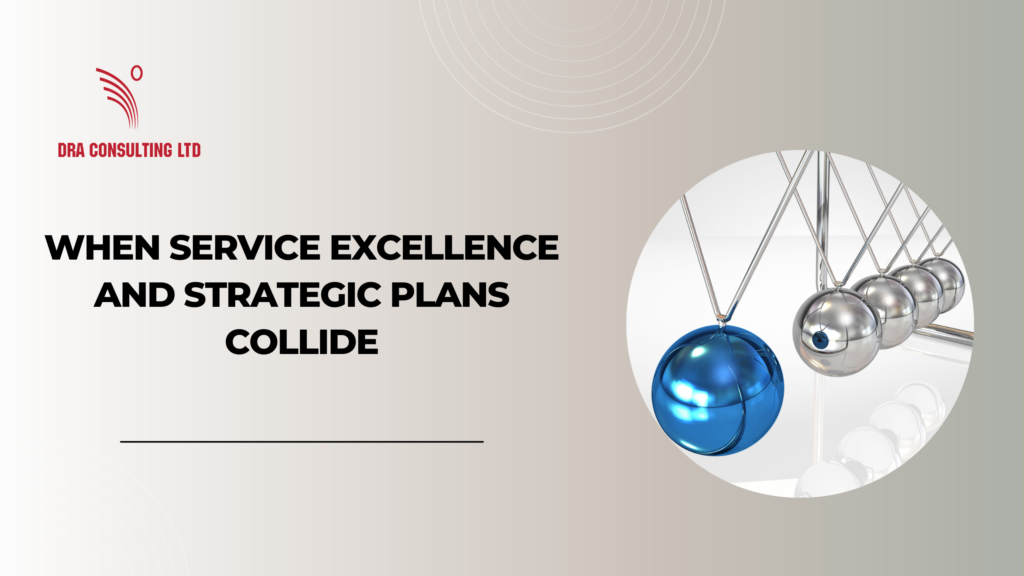I don’t know how many persons will agree with me, but I believe that strategic plans come up as one of the top three relics in the range of business planning devices. Almost every business boasts of having a strategic plan, yet only few of those businesses action, monitor and measure their plan’s performance or progress.
These plans are the glowing embodiment of the next big destination of their business owners and more often than not, are launched with great fanfare, but fail spectacularly to reach their highly anticipated destinations.
In almost every strategic plan that I’ve encountered, some version of service excellence has put in an appearance as a goal, which is a good signal, since it indicates that someone understands that space has to be allotted to keeping customers happy. Unfortunately, this grand gesture does not possess the thrusting power required to convert intention into effective action.
Almost every business boasts of having a strategic plan, yet only few of those businesses action, monitor and measure their plan’s performance or progress.
Service excellence goals that appear in many strategic plans amount to window dressing. I believe that because these goals are not even activated, their appearance is merely for “show.” So, why would they be included in the first place?
Their inclusion is designed to challenge the adaptive capacity of the business in the service delivery universe. It’s a chance to articulate ways of showing how the business should adapt to keep up with the changing needs of their customers. It’s also an attempt at remaining in the competitive game. Finally, it’s a release of strategies for minimizing customer churn and maximizing the return on customer acquisition costs, ostensibly through realizing customer lifetime value. This is a challenge that generally, many businesses fail.
Would it not be better then, just to abandon the inclusion of service excellence goals in strategic plans? Absolutely not. I am reminded of a quote that says, “Don’t raise your voice, improve your argument.” If we apply the wisdom of this quote to the service excellence and strategic planning dilemma, I would say that we should put a stop to the expanding frequency of perfunctory inclusion and begin to connect service excellence strategies to real results. This requires doing things a little differently.
I would say that we should put a stop to the expanding frequency of perfunctory inclusion and begin to connect service excellence strategies to real results.
As usual, I have some thoughts on how a business can have service excellence goals move from the appearance slot, to the actionable tier, within the strategic planning process.
A good start would be for a business to shift its orientation to the customer from that of a short-term, to a long-term, lifetime view, which activates the pathway for building expertise in customer centricity, which as we know, essentially means, getting to “know one’s customers, inside out.” After all, you can’t adapt to something that you don’t understand well.
Make service excellence every employee’s business. I’ve made this declaration many times in this column. When there is no structure for driving compliance and accountability, conformity is reduced to a discretionary act by employees, which is counter-intuitive to service excellence. Basically, I’m suggesting that key performance indicators for delivering an exceptional customer experience, be inserted into every job description, including that of the chief executive officer.
Make service excellence every employee’s business.
Failure to take this action, will absolve a wide swath of employees from owning responsibility for delivering a great experience, simply because they will have no skin in the game. If any business lacks service-related performance indicators in its performance management system, may I suggest that now would be a good time to correct this oversight?
Another shift that should gain some traction, would be to include a goal that moves the business away from siloed, stand-alone, technology components, to holistic systems that are unified to produce a seamless, digitally-enabled, customer journey. This step should be accompanied by channel-agnosticism.
When a business adopts a channel-agnostic approach, all customer interaction channels become equally prioritized and therefore, any decisions involving channels, will become decisions that involve “all” channels. Agnosticism means that a business is not wedded disproportionately to customer contact channels and in turn, ensures that all channels are fully supported and fully customer-ready.
Another shift that should gain some traction, would be to include a goal that moves the business away from siloed, stand-alone, technology components, to holistic systems that are unified to produce a seamless, digitally-enabled, customer journey.
Some of the key weaknesses associated with strategic plans are weak implementation, loose surveillance and irregular progress tracking. Add to this an irresolute relationship with service excellence and we have a prescription for apathetic service delivery.
How can the odds of harmonizing service excellence goals and strategic plans be increased?
By remembering that action should not be sacrificed at the altar of apathy.

